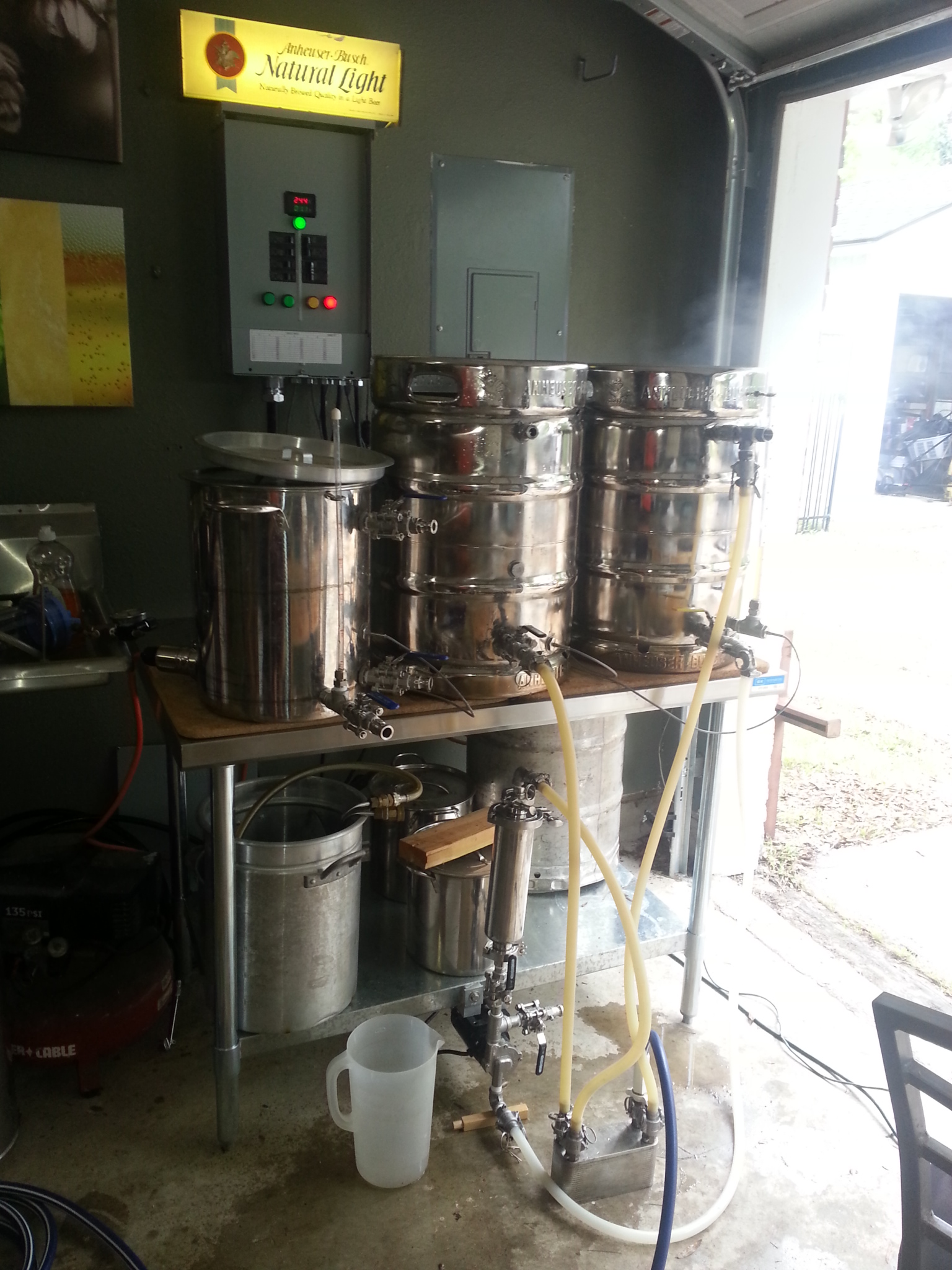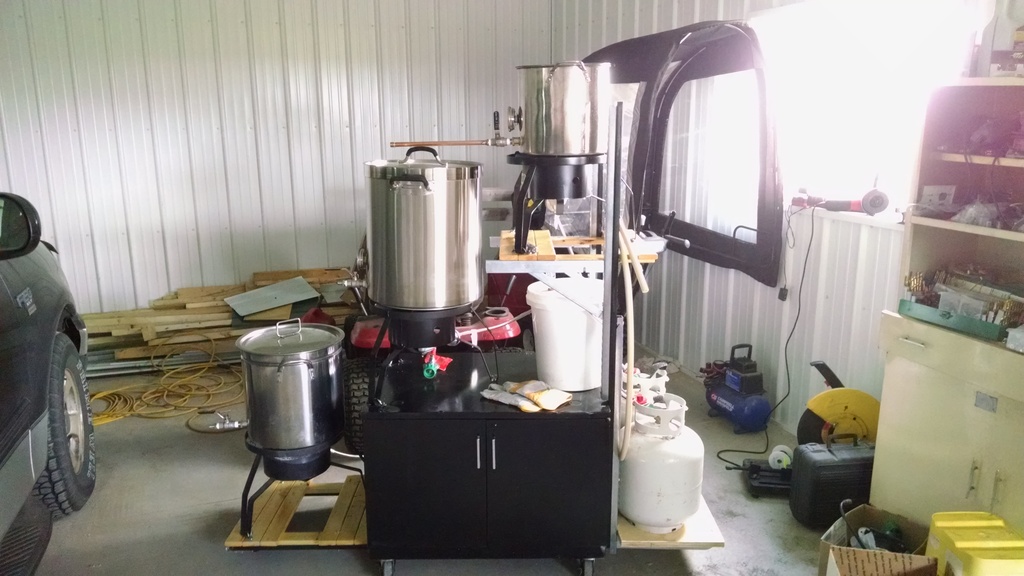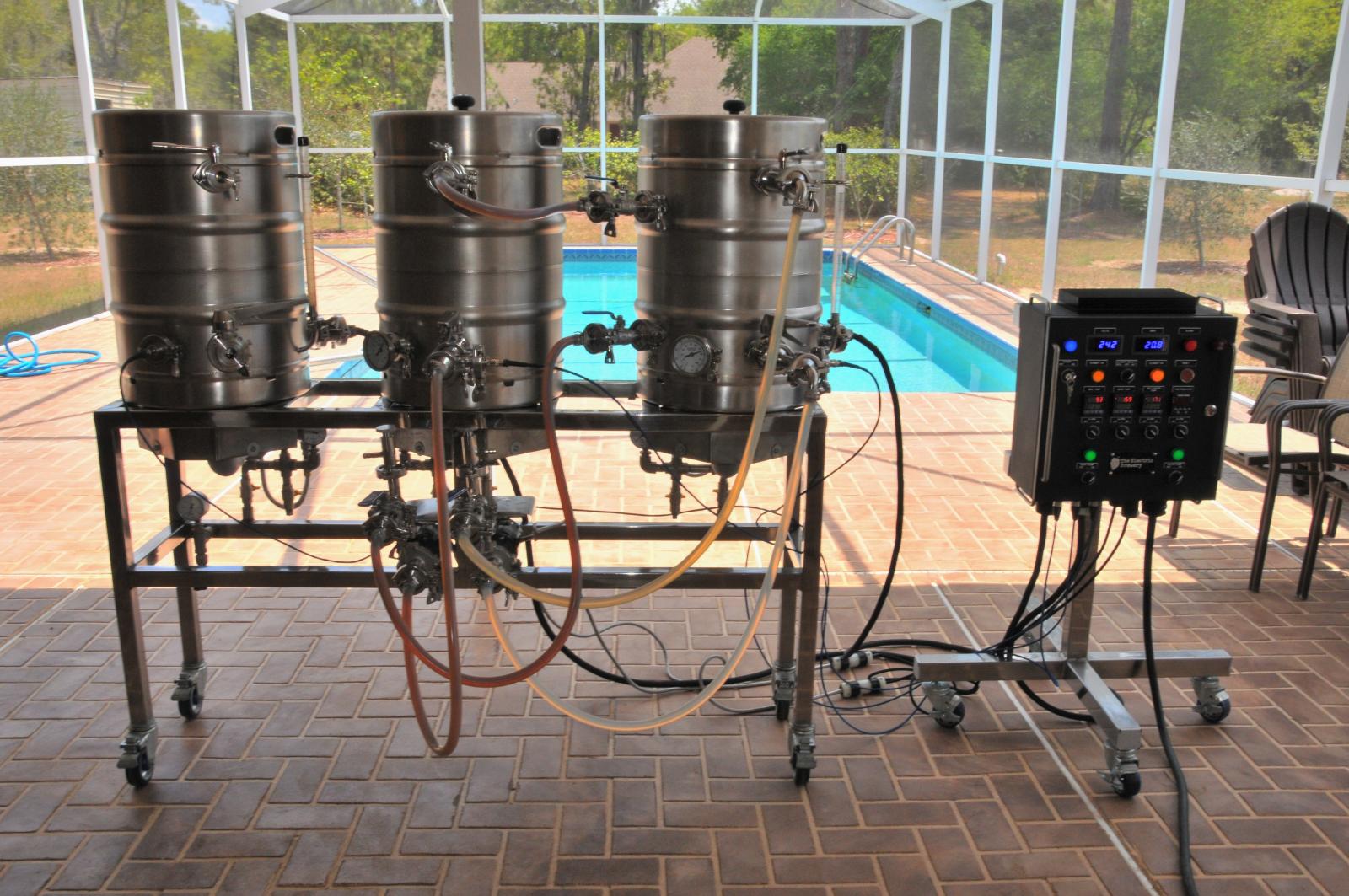Gravity feed on a 3 vessel isn't very practical as you will need an 8' later to see what is going on up top. The biggest benefit on a gravity feed system is how easy it is to fly sparge.
If you plan to batch sparge, it is much simpler to run a single tier system with a single pump. The pump also enables you to use more efficient plate chillers, whirlpool the BK, and circulate the Mash.
But if you must, you need a 40-60K btu burner up top to heat your HLT and a 80-150K btu burner on bottom for your BK.
For a 10 gallon batch you need a minimum of 10 gallon HLT, 15 gallon mash tun, and 15 gallon BK.
I recommend the camlock fittings for your silicone hoses, brewhardware has the high flow versions that work better than the older styles.
DIY bulkheads on your kettles are not very hard; wield-less fittings work pretty well and silver soldering is pretty easy to learn.
As far as piece wising this going forward; I have a pile of parts I don't use anymore that include the stand pictured above.
I have extra chillers, pots, burners, stands, rims tube, and extra controllers I don't use any more. So from experience I don't recommend this path.
Whatever your dream home brewery is, I would advise to work toward that and save yourself lots of money and hardship.













































![Craft A Brew - Safale S-04 Dry Yeast - Fermentis - English Ale Dry Yeast - For English and American Ales and Hard Apple Ciders - Ingredients for Home Brewing - Beer Making Supplies - [1 Pack]](https://m.media-amazon.com/images/I/41fVGNh6JfL._SL500_.jpg)




